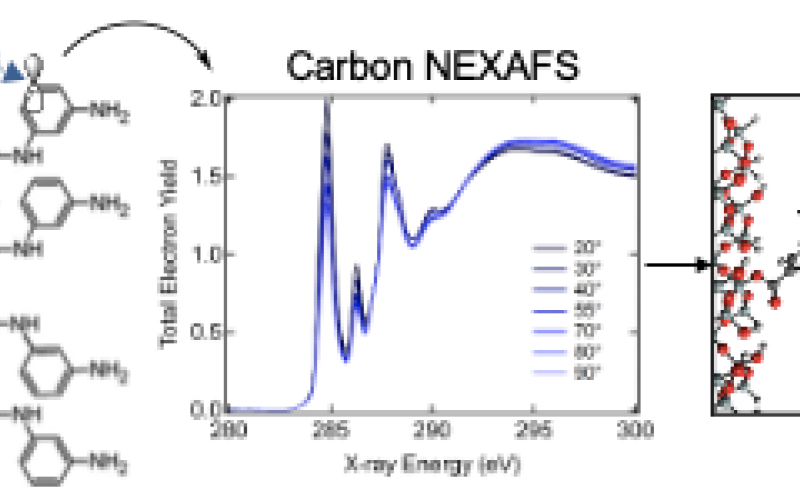
Scientific Achievement
Near Edge X-ray Absorption Fine Structure (NEXAFS) spectroscopy reveals molecular orientation varies with film thickness in layer-by-layer grown model RO membranes.
Image: Model polyamide membrane (left) has spectral signatures at the C K-edge selective to specific functional groups, e.g. phenyl rings, that exhibit angle-dependent intensity (center), indicating a preferred molecular orientation relative to the surface (right).
Significance and Impact
This research identifies surface chemistry and functional group orientation of layer-by-layer assembled RO membranes, which is fundamental to improving membrane performance and enabling fine chemical control over the selective layer.
Research Details
- Model polyamide thin films were prepared with varying thicknesses between 1-10 nm.
- Polarized soft X-ray NEXAFS spectroscopy revealed angle-dependent intensity of aromatic bonds.
- Analysis suggests an intermediate thickness shows the strongest degree of preferred orientation parallel to the surface and continued outward growth for thicker membranes.
This work was performed at Lawrence Berkeley National Laboratory.

